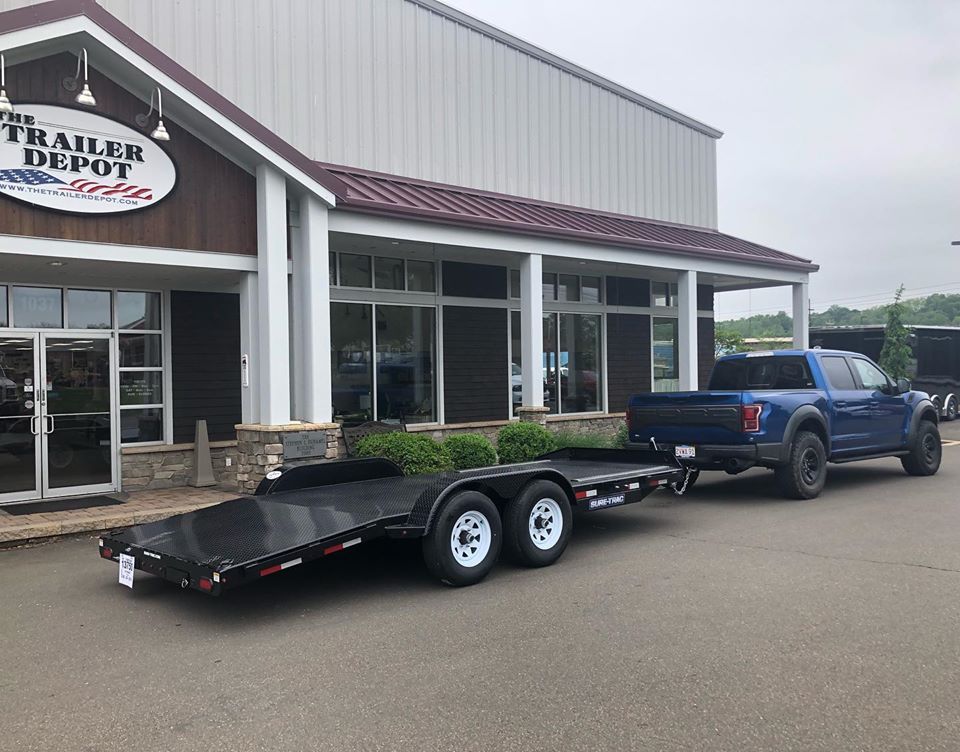With a trailer in tow, you’re operating a vehicle combination that is longer, heavier, and sometimes wider and taller than you’re used to. So, you’ll have to make some compensating adjustments in your normal driving practices.
Slow Down – Moderate to slow speeds put less strain on your tow vehicle and trailer.
Take a “Shakedown Cruise” – A short trial run before your first trip will help familiarize yourself with your trailer’s operating characteristics. It also will let you know that the lights, brakes, hitch, etc. are working properly.
Allow Extra Time and Space – You’ll need both when passing and stopping, especially if your trailer is equipped with brakes.
Check Rear View Mirrors – Doing this frequently will let you know that your trailer is riding properly. We recommended outside rear view mirrors on both sides of your tow vehicle.
Swing Wider – You need to make wider swings at curves and corners because your trailer’s wheels are closer to the inside of a turn than the wheels of your car or truck.
Pass with Extra Care – It takes more time and distance to get around a slower vehicle and return to the right lane with a trailer in tow.
Watch the Wind – To avoid swaying, be prepared for sudden changes in air pressure and wind buffeting when larger vehicles pass from either direction. Slow down a bit and keep a firm hold on your steering wheel. Aim straight down your lane.
Conserve Fuel – You’ll go further on a tank of gas at moderate speeds. Higher speeds increase wind resistance against the trailer and reduce your gas mileage significantly.
Avoid Sudden Starts and Stops – This can cause skidding, or sliding, or jackknifing, even is your trailer has brakes. Avoid quick stops while turning. Smooth, gradual starts and stops will improve your gas mileage.
Signal Your Intentions – Let surrounding vehicles know what you intend to do well before you stop, turn, change lanes, or pass . . .
Shift to a Lower Gear – A lower gear will help ease the load on the transmission and engine when going over steep hills, sand, gravel, or dirt roads. If your vehicle has a tow/haul mode, using it while towing helps the way the transmission shifts, helps when pulling hills and may improve the gas mileage.
Always Be Courteous – Make it as easy as possible for faster-moving vehicles to pass you. Keep to the right of the road and prepare to slow if passing vehicles need extra time to return to their proper lane.
Don’t Tailgate – Allow at least one car and trailer length between you and the vehicle ahead for each 10 mph on your speedometer.
If a Problem Occurs – Don’t panic. Stay Calm. If you experience a sudden bumping and fishtailing, it may indicate a flat tire. Don’t jam on the brakes or mash the accelerator in an attempt to drive out of it. Instead, come to a stop slowly as you keep driving in a straight line as possible. If conditions permit, coast to a very slow speed and try to avoid braking, except when your wheels are straight ahead and your trailer and tow vehicle are in line with each other.
If your trailer begins to fishtail—As you accelerate to highway speed, back off the accelerator a bit. This should stop the fishtailing. If it begins again as you increase speed, stop and check your load. The load should be equalized from side to side and forward enough to put a load on the trailer tongue. Redistribute the load as necessary before continuing.

